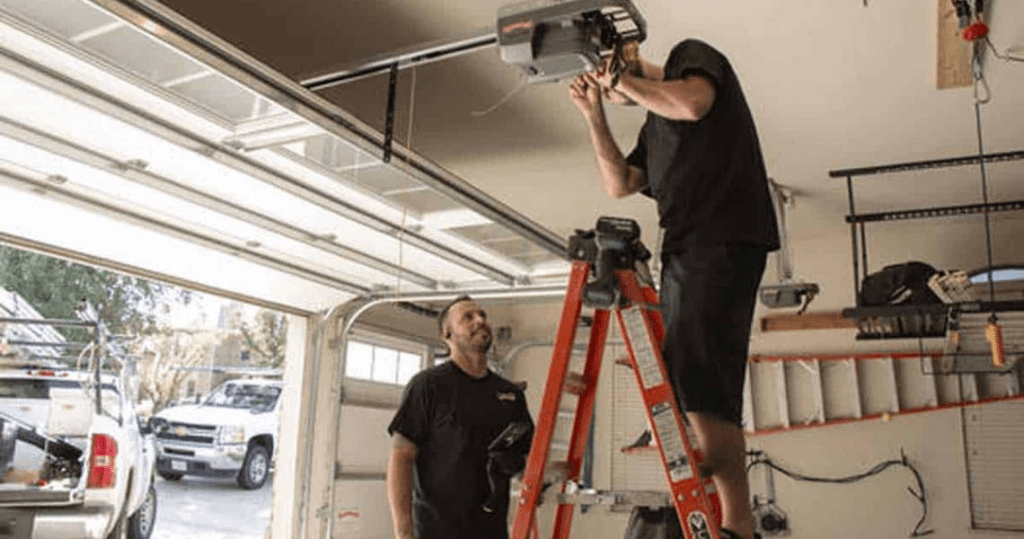Garage doors are an integral part of your home’s functionality and security. When issues arise, especially with a brand like GT, it’s crucial to address them promptly to avoid further complications. This guide provides comprehensive insights into GT garage door repair, including common problems, DIY solutions, and when to call a professional.

Understanding GT Garage Doors
GT garage doors are known for their durability and reliability. However, like any mechanical system, they can experience issues over time. Understanding the components and functionality of your GT garage door will help in diagnosing and fixing problems more effectively.
Components of GT Garage Doors:
- Motor Unit: Powers the garage door opener.
- Remote Control: Allows remote operation of the door.
- Keypad: Provides access via a code.
- Safety Sensors: Prevent the door from closing on objects.
- Tracks and Rollers: Guide the door’s movement.
Common Problems with GT Garage Doors
Several issues might arise with your GT garage door. Identifying these problems early can help in preventing more severe damage.
Read too: Mastering the Art of Adjusting a Chamberlain Garage Door Opener for Smooth Operation and Safety
1. Garage Door Won’t Open or Close
One of the most common problems is when the garage door won’t open or close.
- Possible Causes:
- Faulty motor
- Dead remote batteries
- Obstructed tracks
- Misaligned sensors
- Solutions:
- Check Power Supply: Ensure the opener is plugged in and the circuit breaker is on.
- Inspect Remote Control: Replace the batteries and reprogram if necessary.
- Clear Tracks: Remove any obstructions from the tracks and clean them.
- Align Sensors: Make sure the safety sensors are properly aligned and clean.
2. Garage Door is Noisy
A noisy garage door can be a sign of underlying issues.
- Possible Causes:
- Worn-out rollers
- Lack of lubrication
- Loose hardware
- Solutions:
- Lubricate Moving Parts: Apply lubricant to the rollers, tracks, and hinges.
- Inspect Rollers: Replace worn-out or damaged rollers.
- Tighten Hardware: Check and tighten any loose bolts or screws.
3. Garage Door Moves Slowly
If your garage door moves more slowly than usual, it could be due to several factors.
- Possible Causes:
- Worn-out springs
- Misaligned tracks
- Insufficient lubrication
- Solutions:
- Check Springs: Inspect and replace any worn-out springs.
- Align Tracks: Ensure the tracks are properly aligned and secure.
- Lubricate: Apply lubricant to all moving parts.
4. Garage Door Reverses Before Closing
When the garage door reverses before it closes, it might be due to safety sensors or alignment issues.
- Possible Causes:
- Misaligned safety sensors
- Obstructions in the door’s path
- Issues with the limit switch
- Solutions:
- Align Sensors: Adjust the sensors so they are properly aligned and unobstructed.
- Remove Obstructions: Ensure there are no objects blocking the door’s path.
- Adjust Limit Switch: Follow the manufacturer’s instructions to adjust the limit switch settings.
GT Garage Door Repair: DIY vs. Professional Help
While some issues can be resolved with DIY repairs, others may require professional assistance. Here’s a breakdown to help you decide when to tackle repairs yourself and when to call in the experts.
DIY Repairs
When to DIY:
- Minor issues like replacing remote batteries or cleaning tracks.
- Lubricating moving parts and tightening loose hardware.
How to DIY:
- Tools Needed: Basic tools like screwdrivers, wrenches, and lubricants.
- Safety Precautions: Always disconnect the power before working on the garage door and use safety gear.
Professional Repairs
When to Call a Professional:
- Complex issues like spring replacement or motor repairs.
- When you are unsure about the cause or solution of the problem.
Benefits of Professional Repairs:
- Expert Diagnosis: Professionals can accurately diagnose and fix complex issues.
- Safety: They have the experience and tools to handle dangerous repairs safely.
- Warranty: Many professionals offer warranties on their work, providing peace of mind.
Preventative Maintenance for GT Garage Doors
Regular maintenance can help prevent many common issues and extend the lifespan of your GT garage door system. Here’s how you can keep your garage door in top condition:
- Regular Inspections: Check the door, tracks, rollers, and springs for signs of wear or damage.
- Lubrication: Apply lubricant to moving parts every few months.
- Clean Tracks and Sensors: Regularly clean the tracks and sensors to ensure smooth operation.
- Test Safety Features: Periodically test the safety sensors and limit switches to ensure they are functioning correctly.
Conclusion
GT garage door repair can range from simple DIY fixes to complex professional interventions. Understanding common problems and their solutions will help you maintain your garage door’s functionality and longevity. Regular maintenance and timely repairs are key to keeping your garage door system running smoothly. When in doubt, don’t hesitate to consult a professional to ensure that your garage door operates safely and effectively.



Leave a Reply